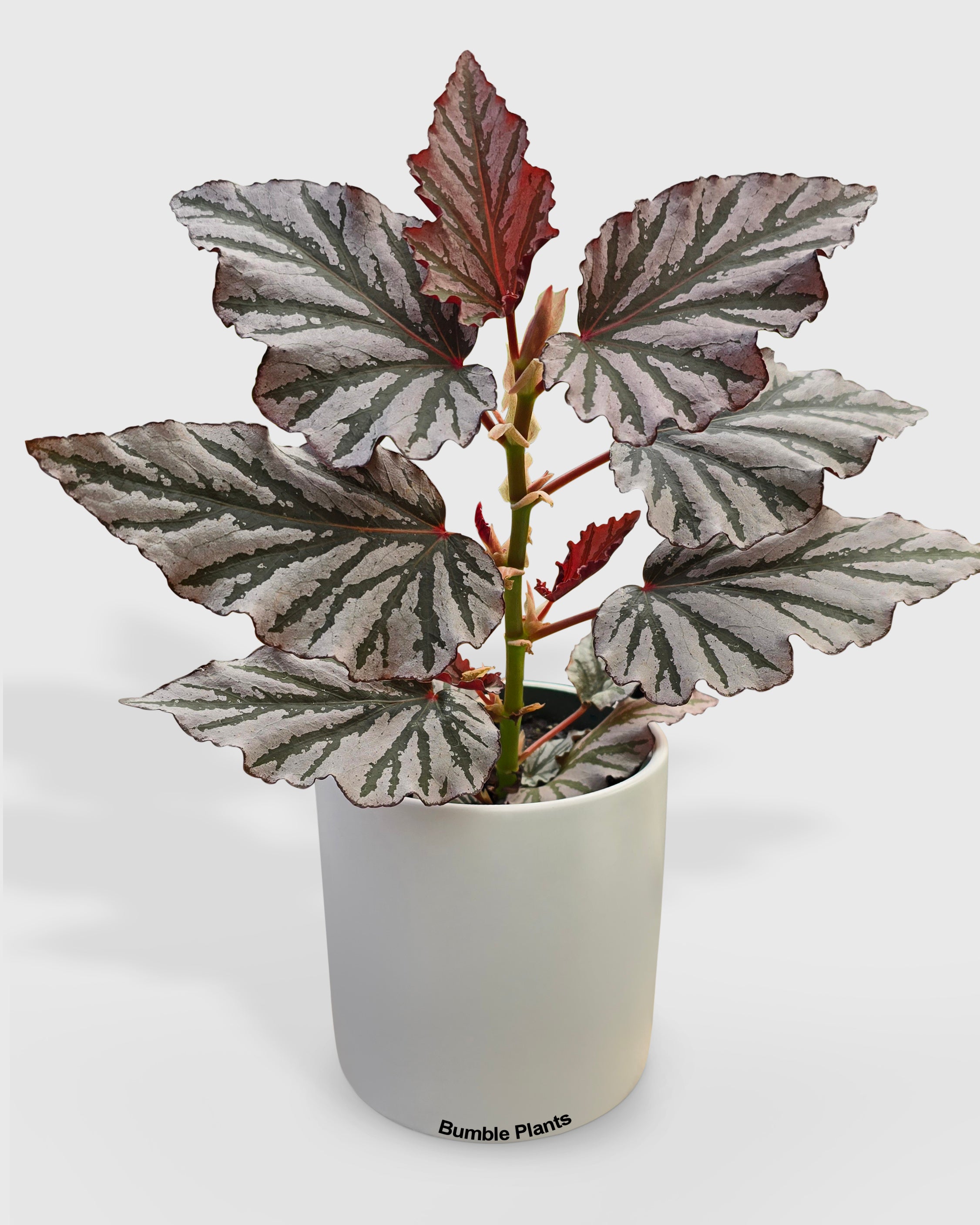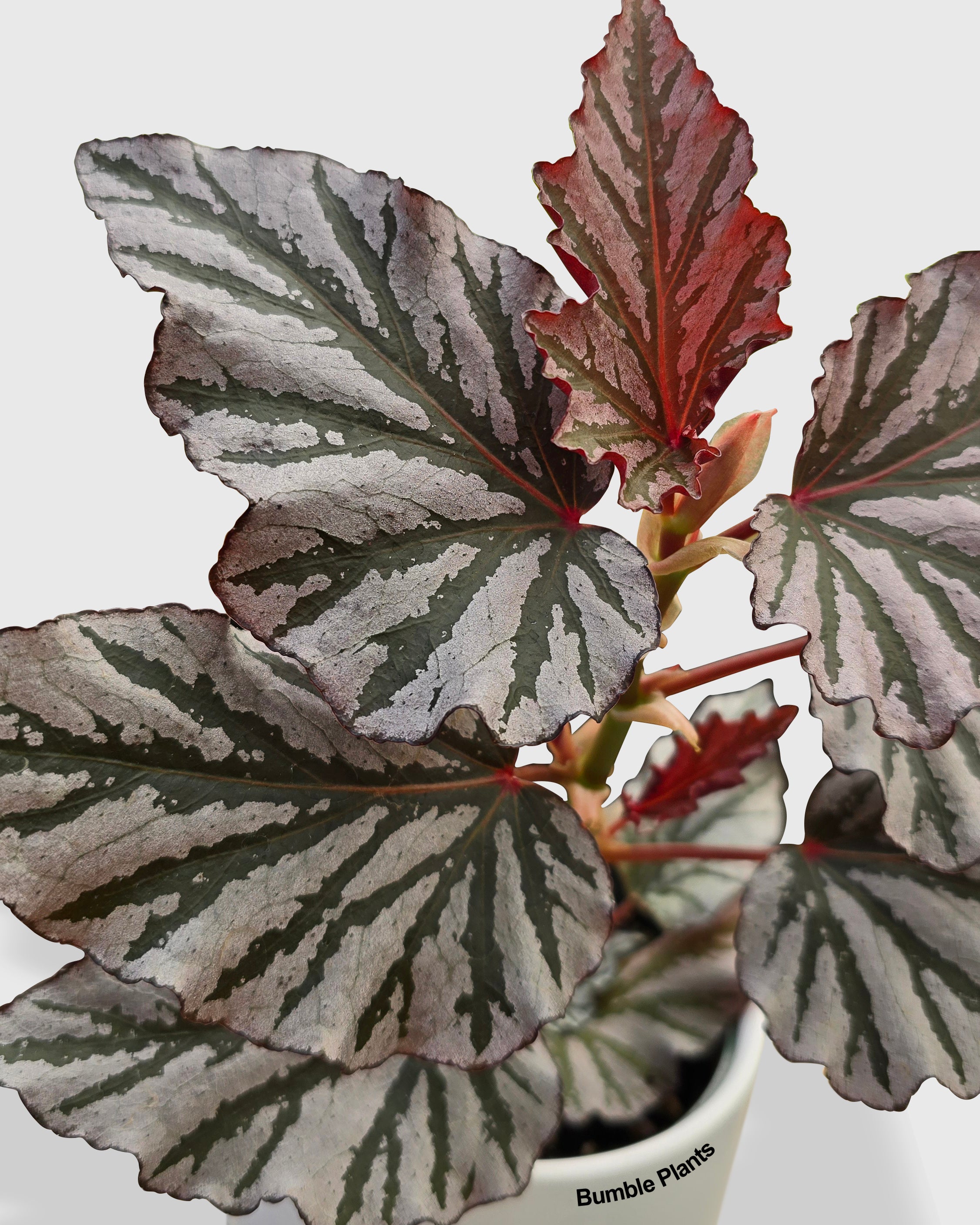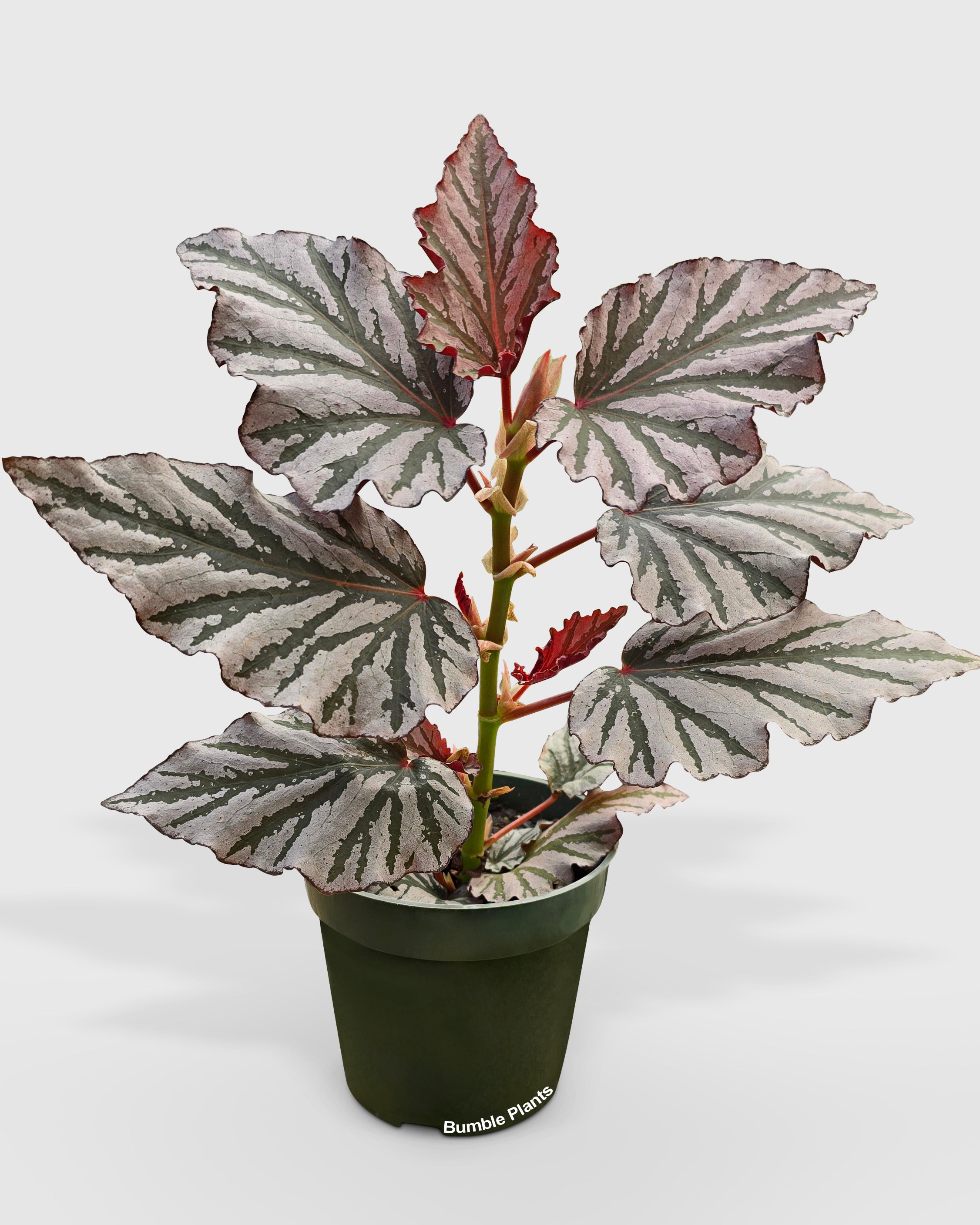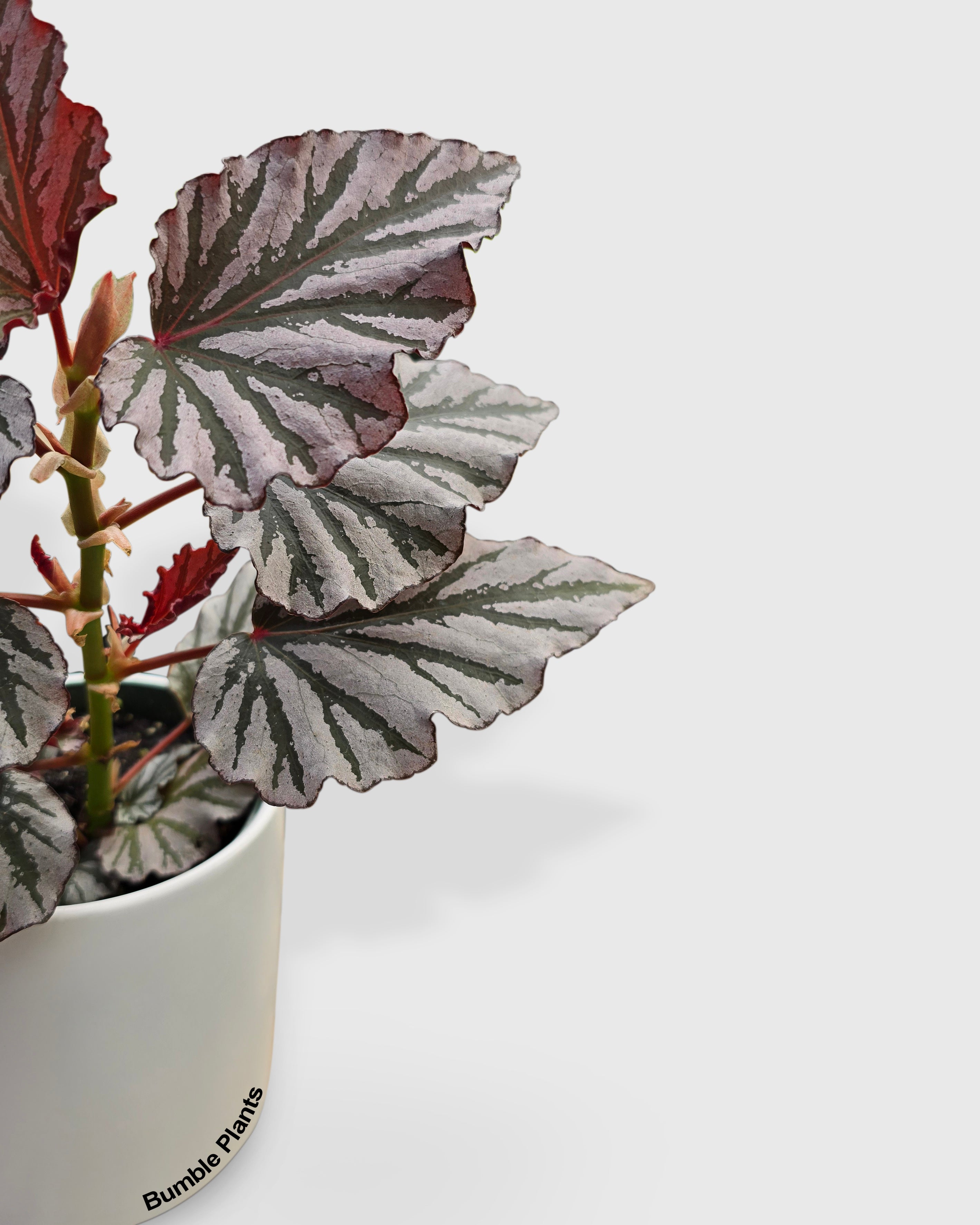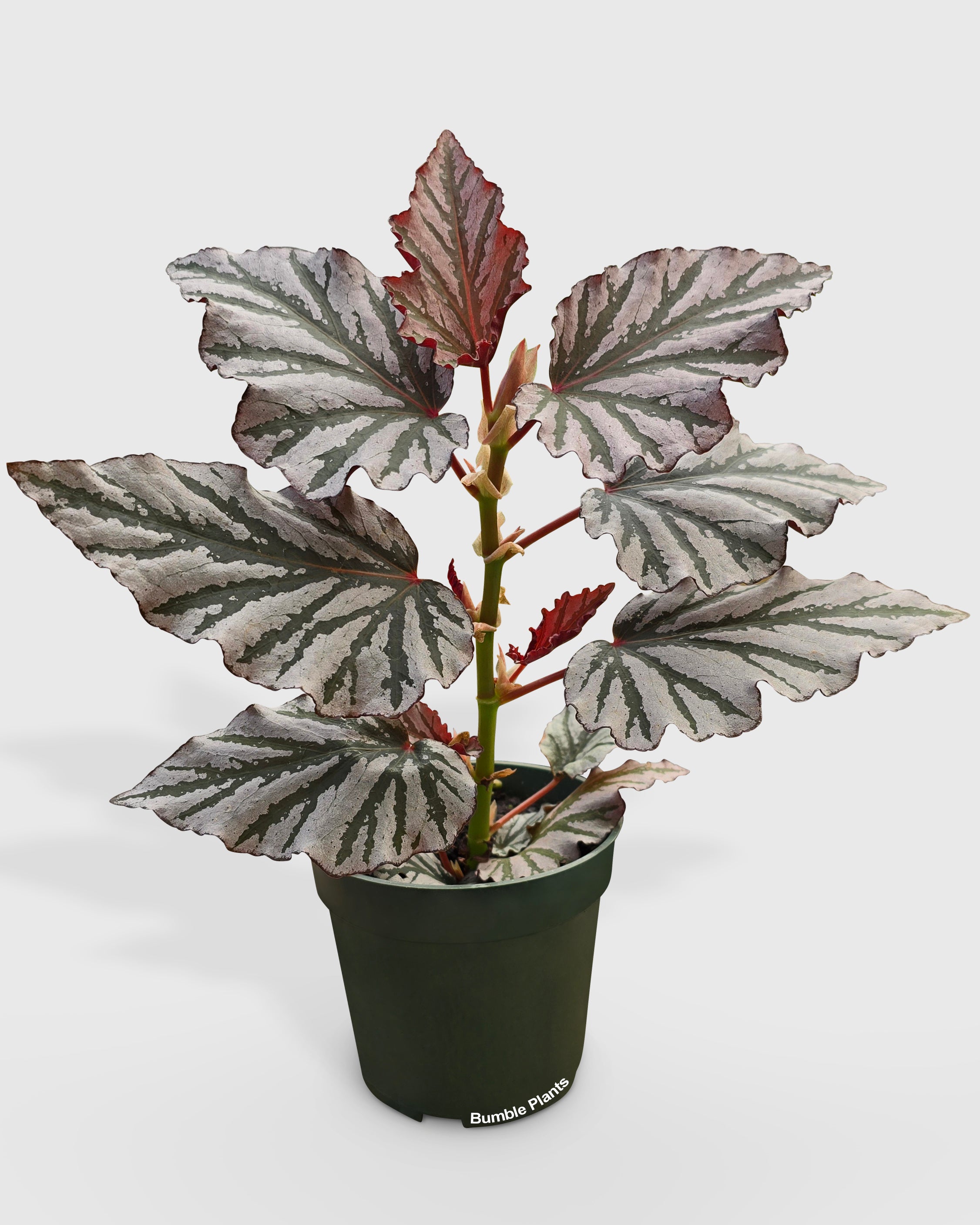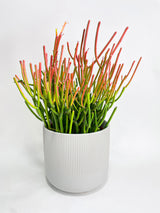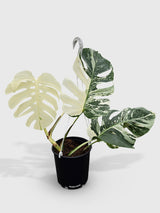You will receive ONE Begonia Kismet Hybrid in a nursery pot, unless stated otherwise. Refer to our FAQ for more information.
Begonia Kismet Hybrid is a striking and rare variety known for its uniquely patterned leaves featuring vibrant shades of green, silver, pink, and deep red undersides. This hybrid begonia thrives indoors with minimal care, making it a perfect choice for collectors and houseplant enthusiasts looking to add an eye-catching statement plant to their space.
How to Care for Begonia Kismet Hybrid
Watering
Begonia Kismet Hybrid prefers evenly moist but well-draining soil. Water when the top 1-2 inches of soil feel dry, but avoid overwatering, as this plant is prone to root rot.
Sunlight
Thrives in bright, indirect light. Direct sunlight can scorch its delicate leaves, while too little light may cause leggy growth.
Temperature
Prefers warm temperatures between 65°F-80°F (18°C-27°C). Protect it from cold drafts and sudden temperature changes.
Humidity
This plant loves high humidity levels (50-70%). If the air is too dry, use a humidifier, place a water tray nearby, or mist the leaves occasionally.
Toxicity
Begonia Kismet Hybrid is toxic to pets and humans if ingested. Keep it out of reach of children and animals.
Fertilizer
Feed with a diluted, balanced liquid fertilizer every 4-6 weeks during the growing season (spring and summer). Reduce feeding in fall and winter.
Growth Rate
A moderate grower that stays compact, reaching up to 12-18 inches tall. Its bushy and colorful foliage makes it perfect for tabletops or decorative pots.
Pruning
Prune occasionally to remove any damaged or yellowing leaves. Trimming back leggy stems will encourage fuller growth.
Propagation
Easily propagated through leaf or stem cuttings. Place cuttings in moist soil or water until roots develop, then transplant into a pot.
Soil Mix
Prefers a light, well-draining soil mix rich in organic matter. A blend of peat moss, perlite, and potting soil works best.
Repotting
Repot every 1-2 years or when the plant becomes root-bound. Use a slightly larger pot with fresh soil to encourage healthy growth.
Common Pests
Watch out for spider mites, aphids, and powdery mildew. Regularly inspect leaves and treat infestations with neem oil or insecticidal soap.
Common Problems
-
Yellowing leaves – Can be caused by overwatering or poor drainage. Adjust watering habits accordingly.
-
Brown leaf edges – Indicates low humidity. Increase moisture levels around the plant.
-
Leggy growth – Occurs in low light conditions. Move to a brighter spot to maintain compact, bushy foliage.
